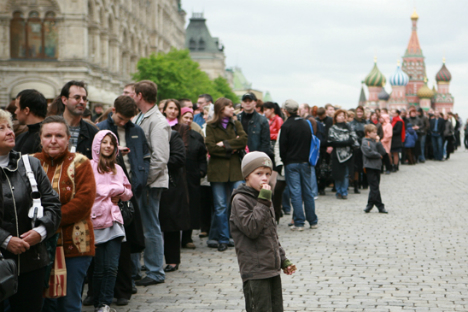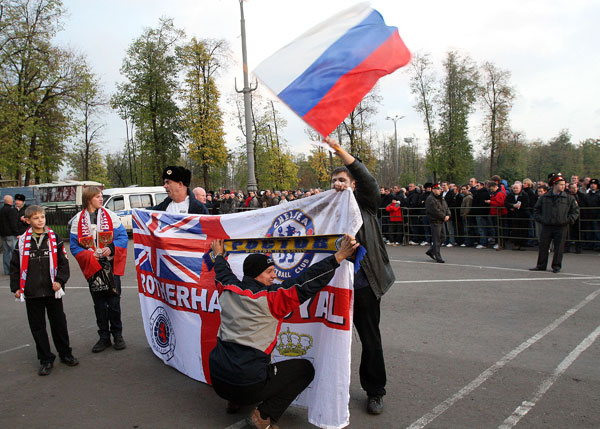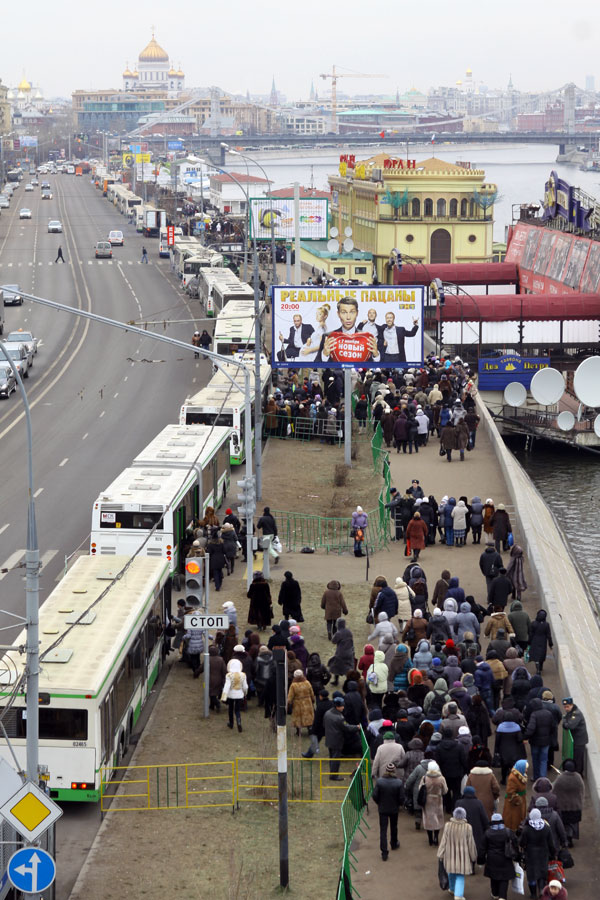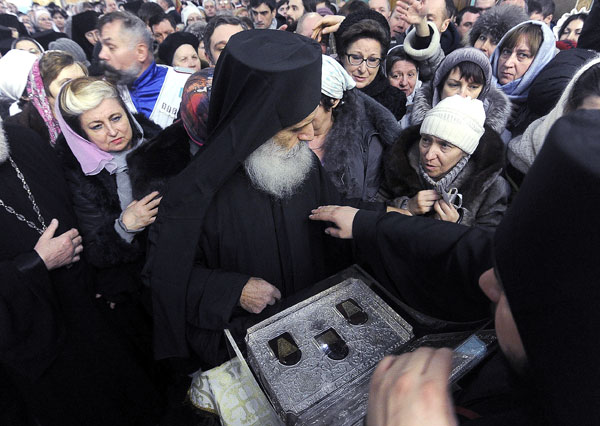
Soviet tradition of queuing has changed somewhat in recent years.
TASSTwenty-five years after the collapse of the Soviet Union there is a new generation of Russians who have never heard about a "deficit of goods" or seen completely bare shelves. However, the phenomenon of waiting in line has not completely disappeared in modern Russia, although it has changed somewhat and has little to do with hunting for hard-to-find goods. RBTH has collected the most striking examples from the past decade and tried to figure out why and what people have “stood” for.
 Source: Alexei Krutov/TASS
Source: Alexei Krutov/TASS
An eagerly awaited football match between Russia and England was held on October 17, 2007. Held at Luzhniki stadium in Moscow, it was the most anticipated game for the Russian team in the qualifying tournament of the European Championship for 2008. Matches of this magnitude had already been held in the Russian capital, but it was the rivalry with the team of England, the birthplace of football, that caused unprecedented excitement.
Russian fans put in more than 570,000 requests for tickets a few months before the start of sales, while the stadium capacity is only 78,000 people. Ticket sales began on October 8. On this day, the line stretched for about a mile. Scalpers’ tickets exceeded official prices by more than 10 times. The Russian team beat the English team by a score of 2:1.
 Source: Alexandra Krasnova/TASS
Source: Alexandra Krasnova/TASS
In fall 2011, the arrival of the famous relic – the Cincture of the Holy Virgin, brought from the Cathedral of Prato, Italy – led to an unprecedented stir in Russia. From October 20 to November 28 the Cincture was exhibited in 14 Russian cities and gathered more than three million people. The largest number of pilgrims arrived in Moscow, where the line to the Christ the Savior Cathedral reached five kilometers (more than three miles). According to the Russian Orthodox Church, during a five-day stay in Moscow approximately 900,000 people visited the relics.
 Source: Dmitry Rogulin/TASS
Source: Dmitry Rogulin/TASS
At the beginning of 2014 another famous relic – the Gifts of the Magi - left Greece for the first time in history; they were exhibited in Moscow and St. Petersburg from January 6-17. In total over 400,000 visitors came to the exhibitions in both cities. Throughout the week, the line to the Christ the Savior Cathedral in Moscow was more than half a mile long, with up to 14,000 people assembled at the same time. The city government supplied 23 buses to support the pilgrims and deployed 800 police officers and soldiers to ensure order.
 Source: Alexander Shcherbak/TASS
Source: Alexander Shcherbak/TASS
From August to November 2014 country’s national currency ruble fell by about 50 percent against the dollar and the euro due to the imposition of economic sanctions against Russia by the West and declining oil prices. The ruble faced the most serious decline on December 15, 2014, when the exchange rate of the Russian currency fell by 10 percent in one day. This resulted in lines at exchange offices throughout Russia in the second half of December, as people tried to protect their savings from depreciation.
 Source: Sergei Bobylev/TASS
Source: Sergei Bobylev/TASS
The exhibition of works by Valentin Serov opened at the Tretyakov Gallery in Moscow on October 7, 2016 to little fanfare. However, it steadily gained notoriety to become the most popular art show in the history of modern Russia. Approximately 450,000 people came out to look at the works of one of the leading Russian portraitists of the late 19th century. Visitors have spent up to five hours in line in -15 C (7 F) to see the exhibition. It was supposed to end on January 17, but due to unprecedented interest, the organizers had to extend the show twice - first until January 24, and then until January 31. If you hurry, you can still get in line.
All rights reserved by Rossiyskaya Gazeta.
Subscribe
to our newsletter!
Get the week's best stories straight to your inbox